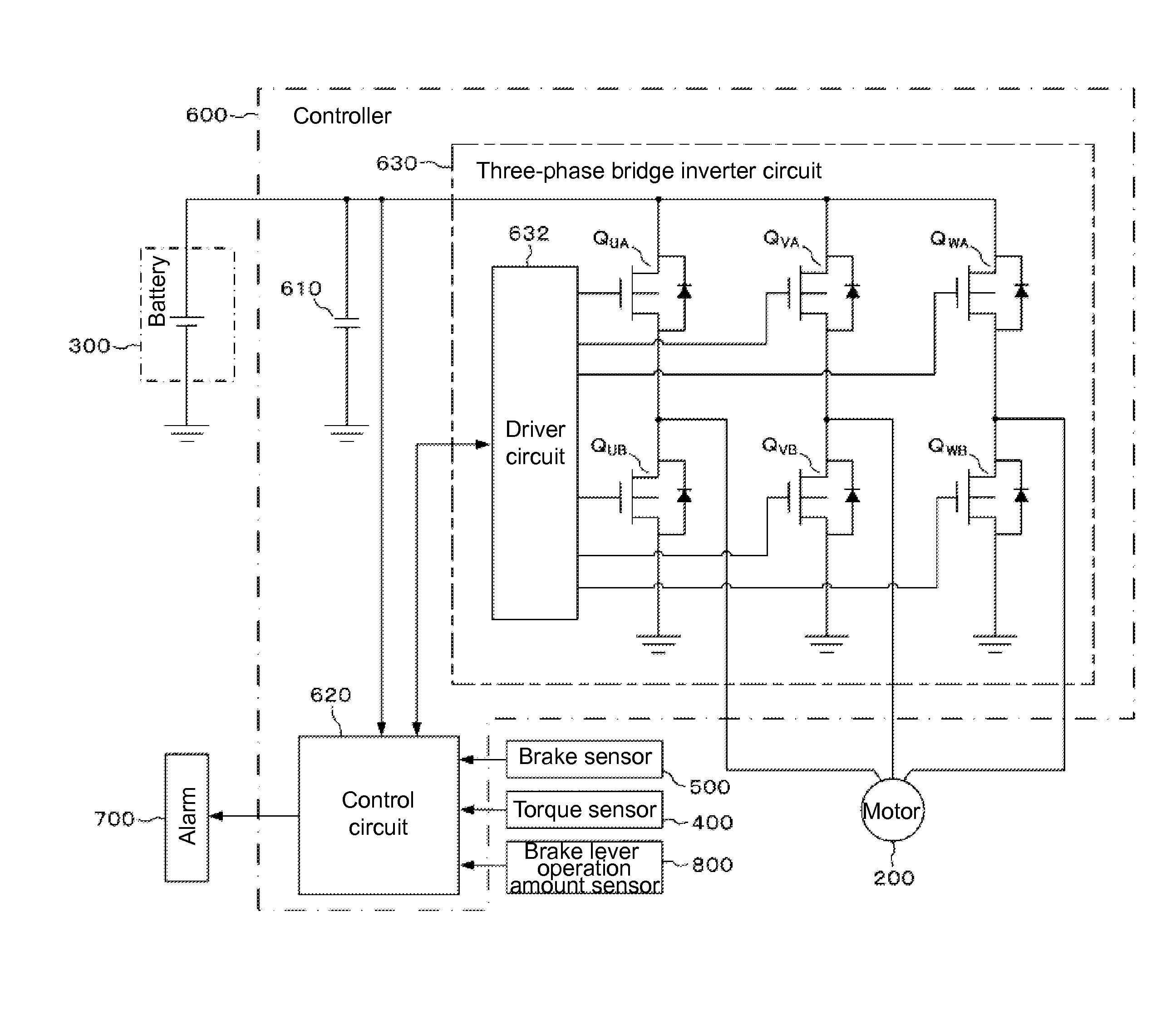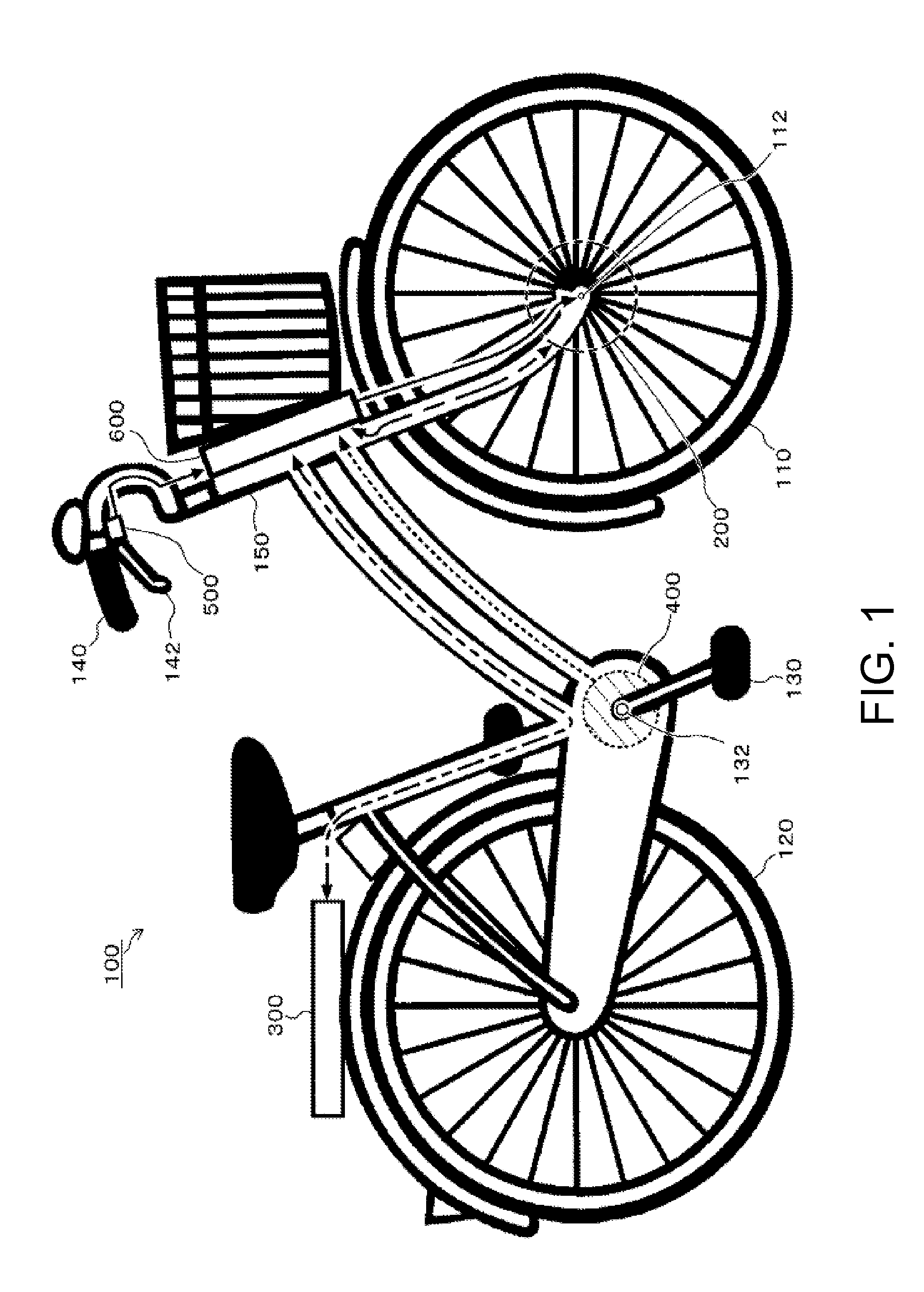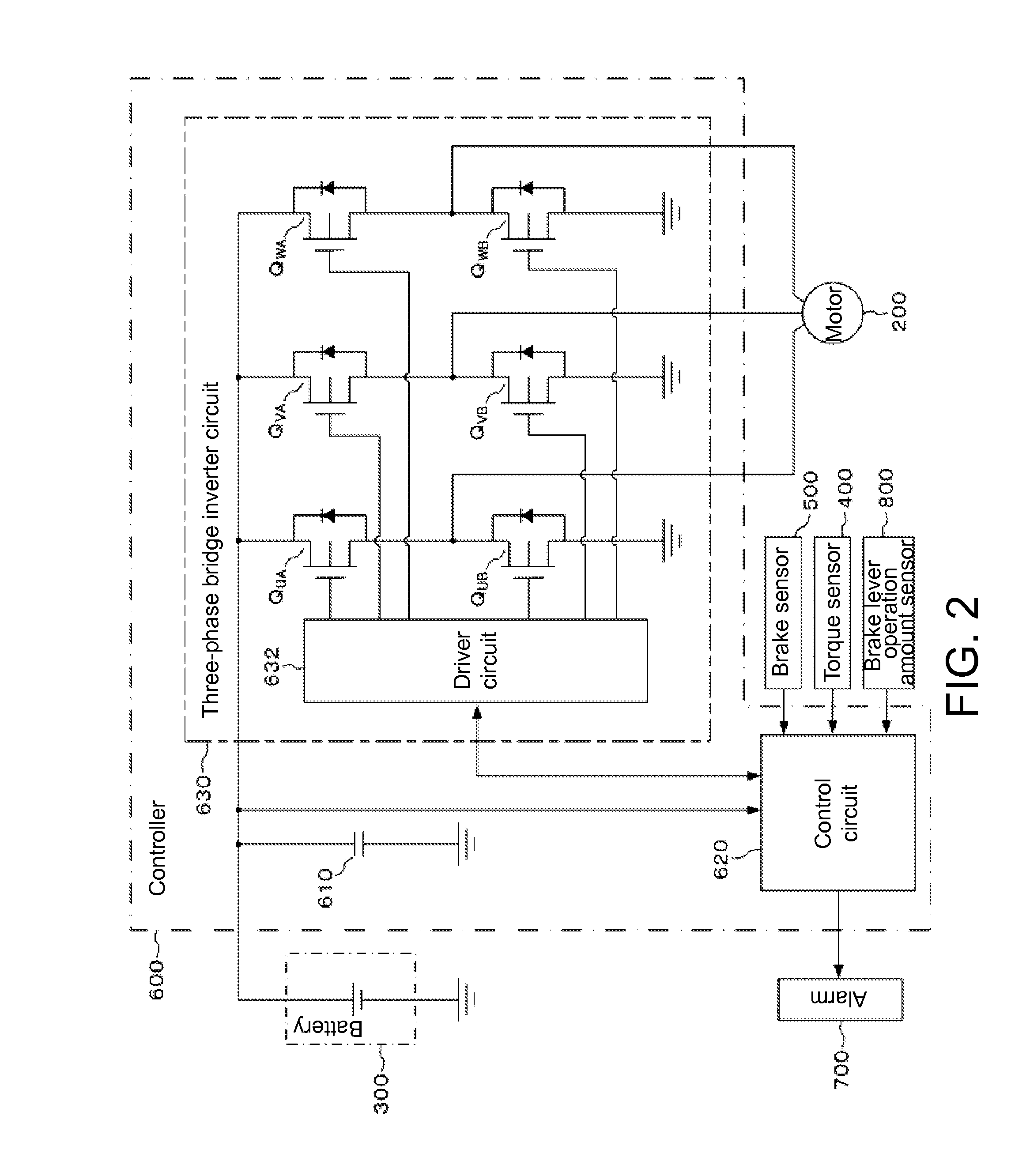Regenerative brake device and motor-assisted vehicle provided with the same
a technology of regenerative brakes and motors, which is applied in the direction of braking systems, propulsion by batteries/cells, cycles, etc., can solve the problems of user pressing the brake lever even harder, waste of useful energy, and inability to provide a linear adjustment of regenerative braking force, etc., to achieve suitable energy recapture, reduce the loss of manual brake energy, and improve the travel distance of electric assist vehicles with a single battery charge
- Summary
- Abstract
- Description
- Claims
- Application Information
AI Technical Summary
Benefits of technology
Problems solved by technology
Method used
Image
Examples
embodiment 1
[0030
[0031]First, Embodiment 1 of the present invention will be explained with reference to FIGS. 1 to 5. FIG. 1 shows an overall configuration of a vehicle of this embodiment. This figure shows an example where the present invention is employed in an electric assist bicycle. In the figure, a motor 200 is provided around a hub 112 of a front wheel 110 of an electric assist bicycle 100. A battery (secondary cell) 300 is disposed near a rack of a rear wheel 120. A torque sensor 400 is disposed around a crankshaft 132 of pedals 130, and a brake sensor 500 is disposed near a brake lever 142 of a handlebar 140. Further, a handle stem 150 has a controller 600 on a side facing a front basket. The motor 200, the battery 300, the torque sensor 400, and the brake sensor 500 are connected to the controller 600 by wiring lines arranged along pipes and a fork. An alarm 700 and a brake lever operation amount sensor 800 will be explained in embodiments below.
[0032]FIG. 2 shows an example of an ele...
embodiment 2
[0051
[0052]Next, with reference to FIG. 6, Embodiment 2 of the present invention will be explained. In the regions BA and BP shown in FIG. 5(C), the regenerative brake is applied linearly. In this specification, these regions where the manual brake is not actuated even when the user operates the brake lever 142 are referred to as play stages. If the region BQ where the manual brake is activated is to be increased to provide an adequate manual braking action for safety, the play stages BA and BP would need to be reduced. In such a case, the linear control of the regenerative duty ratio would need to be conducted by detecting a change in the brake lever operation amount in a smaller operating range in accordance with data values that have been measured in advance similar to the conversion graph shown in FIG. 5(B). This would create a need to use a high-accuracy, high-capability and expensive sensor as the brake sensor 500.
[0053]Also, even if the adequate play stages BA and BP are prov...
embodiment 3
[0058
[0059]Next, Embodiment 3 of the present invention will be explained. In this embodiment, as shown in FIG. 2, the alarm 700 is connected to the control circuit 620. As the alarm 700, an appropriate device, such as a light-emitting device employing a light-emitting diode or the like, or a sounding device employing a piezoelectric element, a speaker, or the like, can be used. When the manual brake is actuated by the increased displacement of the brake wire 144, and the actuation thereof is recognized through the detection signal from the brake sensor 500, the control circuit 620 drives the alarm 700 so as to alert the user of the actuation. Referring to FIG. 5(B), the alarm 700 is activated when the brake sensor output signal that exceeds the signal at the manual brake application point PQ is detected. The manual brake application point PQ can be determined by storing the brake output value at the point PQ in FIG. 5(B) in advance in the memory of the control circuit 620 in FIG. 2....
PUM
 Login to View More
Login to View More Abstract
Description
Claims
Application Information
 Login to View More
Login to View More - R&D
- Intellectual Property
- Life Sciences
- Materials
- Tech Scout
- Unparalleled Data Quality
- Higher Quality Content
- 60% Fewer Hallucinations
Browse by: Latest US Patents, China's latest patents, Technical Efficacy Thesaurus, Application Domain, Technology Topic, Popular Technical Reports.
© 2025 PatSnap. All rights reserved.Legal|Privacy policy|Modern Slavery Act Transparency Statement|Sitemap|About US| Contact US: help@patsnap.com



